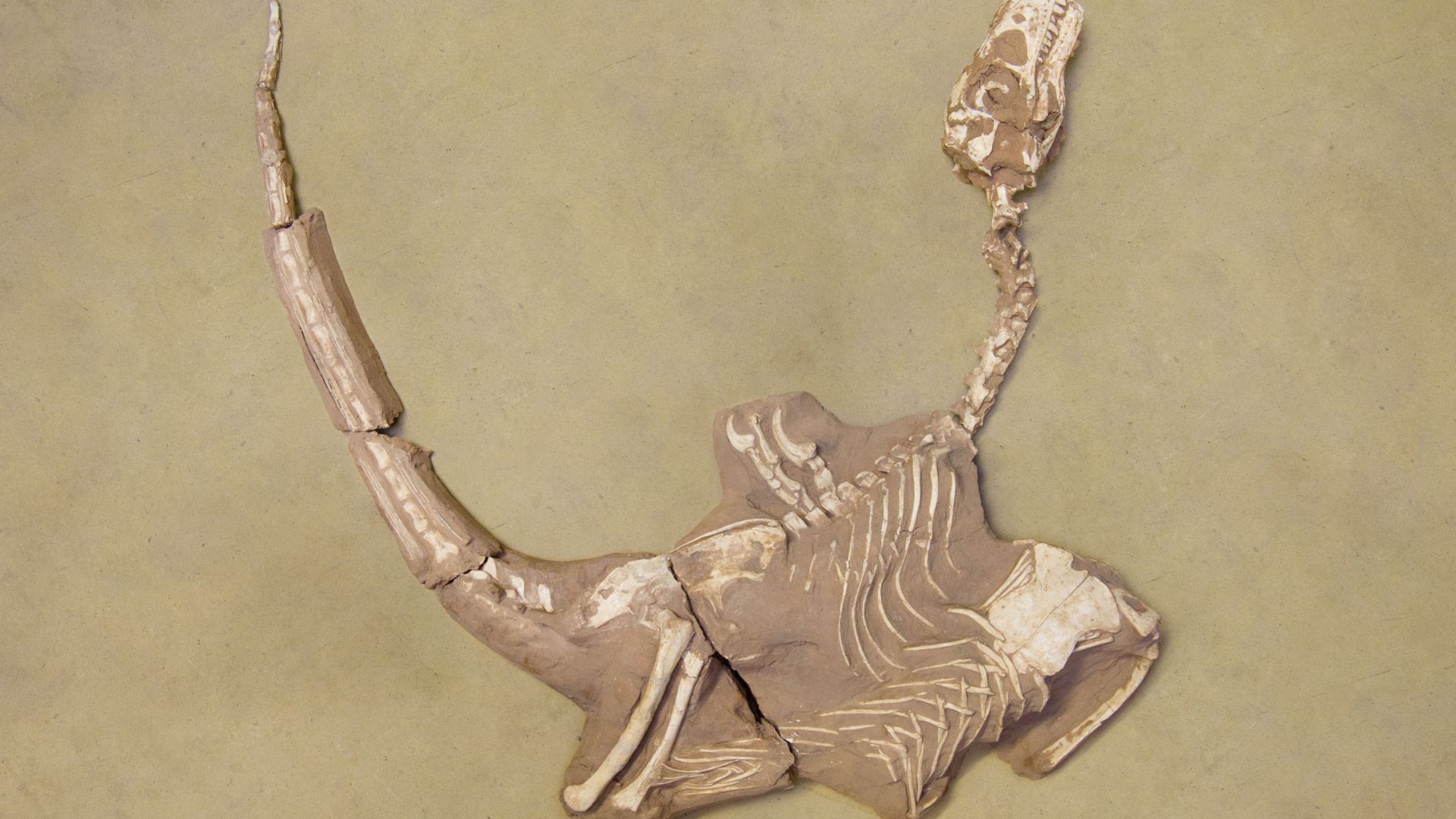In the ancient deserts of Mongolia, a new raptor, dubbed Shri rapax, has been discovered. This close cousin of Velociraptor had a surprising evolutionary twist.
The fossilised remains were unearthed from the Djadokhta Formation in the Gobi Desert of Mongolia — a geological area that was a desert dotted with lakes between 75 and 71 million years ago (Late Cretaceous).
The new bird-like dinosaur’s powerful hands and unusually long claws enabled it to take down larger prey in its habitat.
“Shri rapax has a more massive skull and more robust jaw, a longer neck, sturdier arms, and an unusually strong second finger with an impressive claw about eight centimeters long,” said Pascal Godefroit, paleontologist and co-author from the Institute of Natural Sciences.
“This suggests that Shri rapax was specialized in hunting larger or harder-to-catch prey than its close relatives,” Godefroit added.
Hunting strategy
Shri rapax lived alongside its contemporary, Velociraptor.
Both dinosaurs were about two meters long, but Shri rapax had several physical differences.
Paleontologists believe these powerful hands suggest a different hunting strategy.
Compared to Velociraptor, which probably used its sickle-shaped toe claw to attack, Shri rapax appears to have used its strong arms and hands to hold onto larger or more difficult prey.
Once secured, it would have delivered powerful bites to finish the kill.
“With its powerful arms and hands, it could hold onto prey tightly, then finish it off with repeated strong bites. Velociraptor likely attacked prey first with its feet and sickle-shaped toe claw before using its teeth,” the authors stated.
While its exact diet remains a subject of investigation, potential meals could have included the frilled dinosaur Protoceratops and young armored Pinacosaurus.
Interestingly, the same geological layers contain many fossils of these herbivores.
Shri rapax may also have hunted in groups.
The ancient dinosaur’s fossil was remarkably well-preserved, with bones still connected.
The skeleton’s curled posture with a raised neck and tail suggests the dinosaur either suffocated or drowned, possibly after being buried by a collapsing sand dune.
Close relative of modern birds
No feather traces were found on the fossil. However, scientists are confident it had feathers.
This conclusion is based on evidence from similar raptor fossils found in China that were fully feathered. It is also supported by discovering feather attachment points on a Velociraptor from the same geological formation.
“So we’re almost certain Shri rapax had feathers and resembled a large turkey. This family of raptors, the dromaeosaurids, is the closest relative of modern birds,” the team noted.
Shri rapax is a member of the Dromaeosauridae family. This group of small-to-medium-sized feathered predatory dinosaurs is commonly known as “raptors” and includes other well-known species like Velociraptor.
The findings suggest that this group was ecologically diverse.
The Shri rapax fossil had a troubled journey. It was illegally poached from Mongolia, smuggled out of the country, and sold on the black market.
After changing hands several times, it was acquired by a French company, which reported it to the Institute of Natural Sciences.
Palaeontologists could do a 3D scan of the skull, which was a key step, as the skull was later lost.
Following negotiations, the complete fossil skeleton of Shri rapax is now officially being returned to its rightful home in Mongolia.
The findings were published in the journal Historical Biology.
